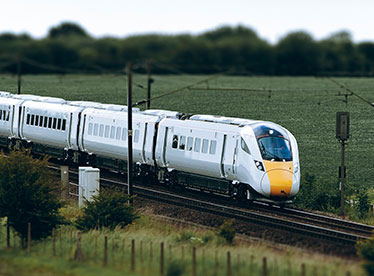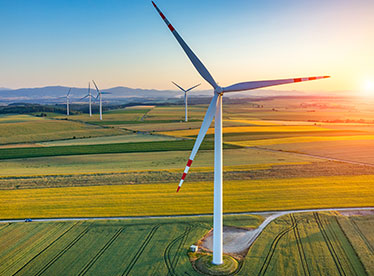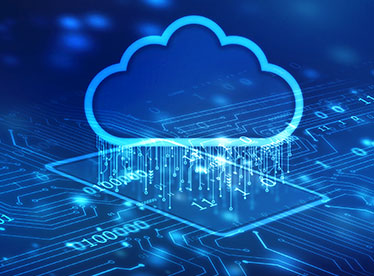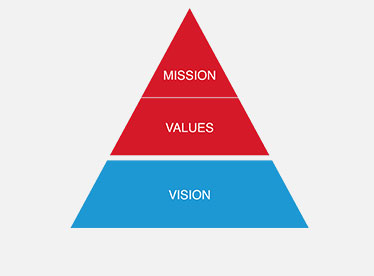- White House. (2021, April 22). FACT SHEET: President Biden Sets 2030 Greenhouse Gas Pollution Reduction Target Aimed at Creating Good-Paying Union Jobs and Securing U.S. Leadership on Clean Energy Technologies. https://www.whitehouse.gov/briefing-room/statements-releases/2021/04/22/fact-sheet-president-biden-sets-2030-greenhouse-gas-pollution-reduction-target-aimed-at-creating-good-paying-union-jobs-and-securing-u-s-leadership-on-clean-energy-technologies/
- World Economic Forum. (2020, January 16). How Manufacturing can Thrive in a Digital World and Lead a Sustainable Revolution. https://www.weforum.org/agenda/2020/01/factories-of-the-future-innovation-manufacturing/
- United States Environmental Protection Agency (EPA). (2021, April 1). Carbon Pollution from Transportation. https://www.epa.gov/transportation-air-pollution-and-climate-change/carbon-pollution-transportation#:~:text=%E2%80%8BGreenhouse%20gas%20(GHG)%20emissions,terms%20than%20any%20other%20sector
- Organisation for Economic Cooperation and Development (OECD. (2017, January 30). Transport Demand and CO2 Emissions to 2050. ITF Transport Outlook 2017. https://www.oecd-ilibrary.org/sites/9789282108000-5-en/index.html?itemId=/content/component/9789282108000-5-en#:~:text=According%20to%20our%20projections%2C%20global,growth%20is%20not%20uniformly%20distributed
- McKinsey. (2019, January). Global Energy Perspective 2019: Reference Case. https://www.mckinsey.com/~/media/mckinsey/industries/oil%20and%20gas/our%20insights/global%20energy%20perspective%202019/mckinsey-energy-insights-global-energy-perspective-2019_reference-case-summary.ashx
- United States Environmental Protection Agency (EPA). (2021, April 14). Sources of Greenhouse Gas Emissions. https://www.epa.gov/ghgemissions/sources-greenhouse-gas-emissions
- Association of American Railroads. (2021, March). Freight Railroads & Climate Change. https://www.aar.org/wp-content/uploads/2021/02/AAR-Climate-Change-Report.pdf
- White House. (2021, March 31). FACT SHEET: The American Jobs Plan. https://www.whitehouse.gov/briefing-room/statements-releases/2021/03/31/fact-sheet-the-american-jobs-plan/
- IEA. (2019, May). Global EV Outlook 2019. https://www.iea.org/reports/global-ev-outlook-2019
- Center for Sustainable Systems, University of Michigan. (2020, September). Carbon Footprint Factsheet. http://css.umich.edu/sites/default/files/Carbon%20Footprint_CSS09-05_e2020_0.pdf
- White House. (2021, March 31). FACT SHEET: The American Jobs Plan. https://www.whitehouse.gov/briefing-room/statements-releases/2021/03/31/fact-sheet-the-american-jobs-plan/
- White House. (2021, March 31). FACT SHEET: The American Jobs Plan. https://www.whitehouse.gov/briefing-room/statements-releases/2021/03/31/fact-sheet-the-american-jobs-plan/
- Sarah Kaplan. The Washington Post. (2021, January 28). Biden Wants an All-Electric Federal Fleet. The Question is: How Will He Achieve It?. https://www.washingtonpost.com/climate-solutions/2021/01/28/biden-federal-fleet-electric/
- White House. (2021, March 31). FACT SHEET: The American Jobs Plan. https://www.whitehouse.gov/briefing-room/statements-releases/2021/03/31/fact-sheet-the-american-jobs-plan/
-
Products
-
Transportation & Mobility Solutions
Transportation & Mobility Solutions
At Hitachi, we engineer industry-leading transportation and mobility solutions by leveraging decades of knowledge and using high-quality automotive material and components.
-
Energy Solutions
Energy Solutions
We believe the only solution for fulfilling the growing power requirements of industries and society is through a comprehensive portfolio of sustainable energy solutions and delivering innovative high-efficiency energy systems.
-
IT Infrastructure Services
IT Infrastructure Services
Hitachi’s state-of-the-art IT products and services are known to streamline business processes which result in better productivity and a higher return on investment (ROI).
-
Social Infrastructure: Industrial Products
Social Infrastructure: Industrial Products
Within the industrial sector, Hitachi is consistently delivering superior components and services, including industrial and automation solutions, useful in manufacturing facilities.
-
Healthcare & Life Sciences
Healthcare & Life Sciences
At Hitachi, we believe that healthcare innovation is crucial to a society’s advancement. A strong healthcare sector is often considered an inseparable element of a developed society.
-
Scientific Research & Laboratory Equipments
Scientific Research & Laboratory Equipments
Hitachi focuses on extensive research and development, transformative technology, and systems innovation to unfold new possibilities and create new value through scientific endeavors that strengthen the connection between science and social progress.
-
Smart Audio Visual Products
Smart Audio Visual Products
Since 1956, Hitachi audio visual products have provided state of the art solutions to consumers all over the world. It has been our pleasure to design competitive products at the lowest possible prices while maintaining our industry-leading quality standards for your comfort and enjoyment.
-
View All Products
Hitachi Products & Solutions
Hitachi, a technology leader in the U.S., offers a diverse set of products and solutions, and breakthrough technologies for smart manufacturing, green energy and mobility solutions that empower governments, businesses, and communities.
-
Transportation & Mobility Solutions
- Social Innovation Solutions
-
About Us
-
Hitachi in the U.S.A.
Hitachi in the U.S.A.
Discover information about the Hitachi group network across the Americas, upcoming events and sustainability endeavours, CSR policies, and corporate government relations.
-
About Hitachi Group
About Hitachi Group
Explore our leadership team, investor relations, environmental vision, and sustainability goals. Learn how Hitachi is leveraging its research & development capabilities for social innovation across industry verticals.
-
Hitachi in the U.S.A.
- News Releases
- Case Studies
- Careers
- R&D







